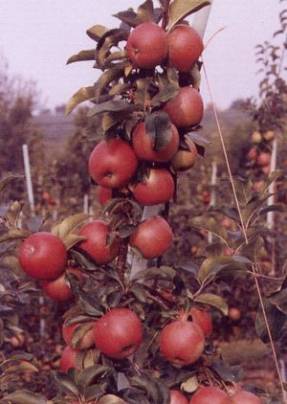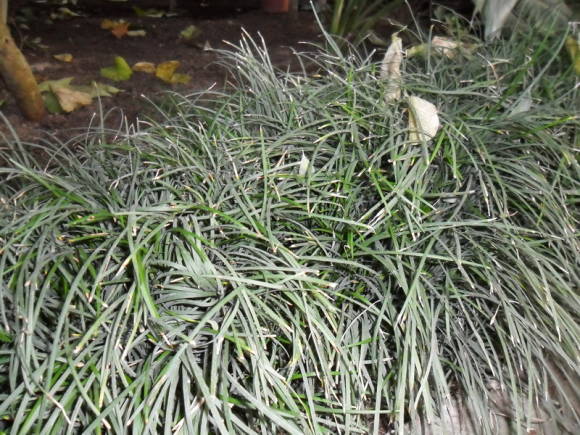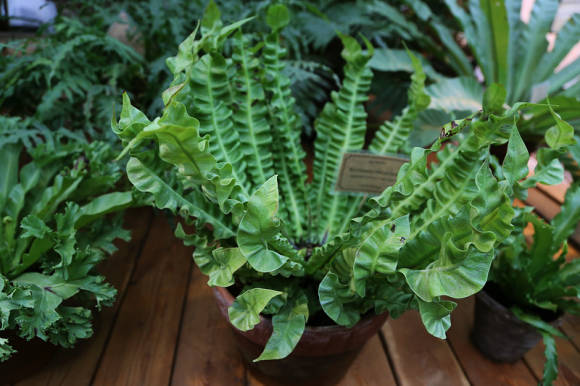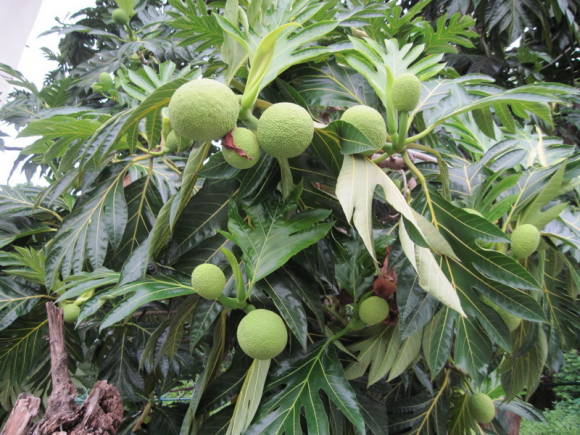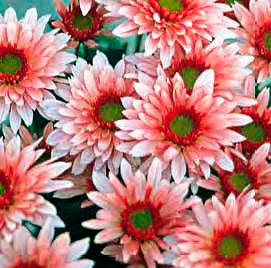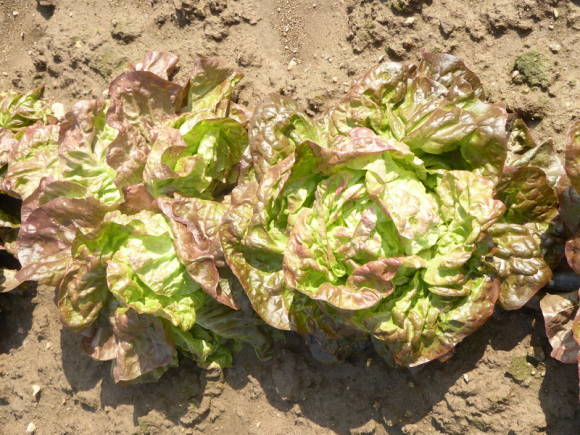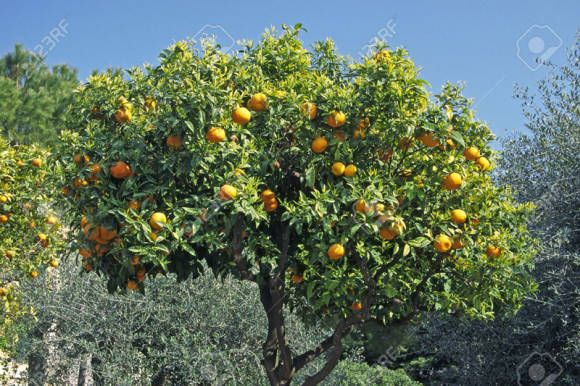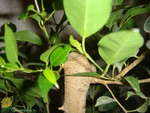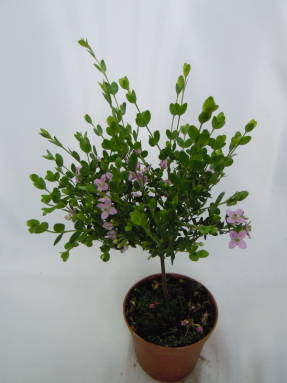Genus Daphne, or Wolf, botanists are more often referred to as Daphne, using the Latin name (Daphne), so that there is no confusion with other shrubs, which also have poisonous fruits and for which the name "wolfberry" is popularly assigned, such as common honeysuckle, etc.
 |  |
Wolves belong to the Wolf family (Thymelaeaceae). More than 90 representatives of this genus are known to live in Europe, Asia and North Africa. More than 10 species grow in Russia, which are rare endangered plants, many are listed in the Red Book. They are united by similar structural features.
Wolves are deciduous and evergreen shrubs. Small flowers, often pink or light cream in color, are practically devoid of pedicels and have a smell. Fruits are bright single-seeded drupes. Usually the shrub blooms on leafless shoots, sometimes again in autumn, but weaker and no longer form fruit.
A powerful root system goes deep into the soil, keeping plants from gusty winds and also saving them from dehydration. These shrubs are very decorative, but due to the fact that they are poisonous, plantings are placed away from places where children often visit. They do not like transplanting and hardly need pruning.
The most common is the wolfberry, the deadly wolf, or "wolf bast" (Daphnemezereum). This species grows in the forests of the European part of Russia and in Siberia, rises to the mountains of the Caucasus. A short shrub about 1 m high with straight gray shoots in May is covered with lilac-pink flowers with 4 petals and 8 stamens. The flowers sit tightly on the shoots and exude a pleasant aroma reminiscent of vanilla. Bees, bumblebees, butterflies and flies rush to the flowers. When the bush fades, oblong leaves appear, concentrated closer to the tops of the shoots.
 |  |
In August, scarlet oval drupes ripen. Usually, fewer than 10 bright, shiny fruits can be seen on each plant. The clearly visible color of the fruit attracts birds that feed on the fruit and carry the seeds. Interestingly, the highly poisonous fruits do not harm the birds. The fruits contain glycosides daphnin and cocognin, poisonous resin meserin, essential oils, etc. In case of poisoning with fruits, vomiting and increased bleeding occur. In wolf bast, not only the fruits are highly poisonous, but also other parts of the plant - the bark and leaves. In folk medicine, they are used as an antipyretic, emetic and anthelmintic agent, externally - for neuralgia, polyarthritis, radiculitis and joint pain.
Wolf's bast is a winter-hardy shrub that can be grown in gardens, observing the precautionary rules. Interesting varieties Plena (Plena) with double flowers, Alba (Alba) with creamy white and Grandiflora (Grandiflora) with large flowers. The landing site can be in the sun or shade. The bush grows well on humus-rich soils without moisture stagnation. The soil must be mulched, avoiding strong desiccation. Pruning and transplanting is undesirable for him. Propagated by seeds and cuttings.
Altai wolfberry grows in Siberia (Daphne altaica), outwardly similar to a wolf's bast, from 0.5 to 1 m in height. The difference is that it has white flowers, collected in groups of 3-5 pieces, and almost black ovoid drupes. The bush blooms in May, simultaneously with the emerging leaves. The first flowering is observed in the 6th year of life, the fruits rarely ripen. It can be propagated by cuttings, suckers, and seeds. Seedlings bloom in the 6th year.
 |  |
Alpine wolfberry (Daphne alpina) comes from the Alps, where it lives in the alpine belt. A low (about 0.5 m high) deciduous shrub blooms in May. Pubescent shoots. The flowers are white. Red drupes of an oblong-ovoid shape ripen at the end of summer. Suitable for rock gardens, but due to poor winter hardiness, shelter is required for the winter. Cuts poorly.
Olive-like wolfberry(Daphne oleiodes) - a plant of the Mediterranean (Southern Europe and North Africa), Central and Asia Minor.An evergreen slow-growing shrub with pubescent shoots up to 1 m tall (in the middle lane - up to 0.3 m) and medium-sized obovate, shaggy leaves. It blooms from late May to early June with white flowers with narrow pointed lobes, collected in 3-8-flowered capitate inflorescences. Red drupes ripen from mid-July. Due to its low growth, winter-hardy in the middle lane. It reproduces poorly by cuttings.
The evergreen wolfberry, or Julia's wolfberry, is very dressed up (Daphne cneorum)living in the mountains of Central and Southern Europe. This is a shrub, creeping on the ground, about 20 cm high, occupying an area of 1.0-1.5 square meters. m. It blooms after the appearance of leaves (in May) with fragrant pink-crimson flowers, which cover the foliage like a carpet. Leathery fruits - yellow-brown drupes - appear closer to autumn, but in Central Russia the seeds do not ripen. This species grows on well-calcified soils, winters safely in central Russia, remaining under the snow cover.

European breeders pride themselves on the popular varieties Major with purple flowers and Eximia with bright pink flowers. Variegated varieties with white-bordered or green-bordered milky-green leaves are very unusual and elegant. The species is propagated by cuttings that root well.

Burkwood's wolfberry(Daphne x burkwoodii) - This is a hybrid species obtained from wolfberry and Caucasian wolfberry. A small shrub about 1 m high, blooming luxuriantly on the tops of the shoots with pink-lilac flowers. Especially elegant varieties with lanceolate semi-evergreen or falling leaves.
Varieties Albert Burkwood (Albert Burkwood) - fast growing semi-evergreen shrub with pink flowers. Somerset (Somerset) is similar to the previous one, with semi-evergreen leaves and fragrant pinkish-white flowers. Variety Astrid (Astrid) has large bright pink flowers, concentrated on the tops of the shoots. The Alba-Variegata cultivar has pale pink flowers and light cream edging on the leaves. All varieties are capricious, thermophilic and do not like direct sun. From exposure to the scorching rays of the sun, the bush can shed all the leaves.
In the undergrowth of the mountain forests of the Ciscaucasia grows wolfberry pontic(Daphne pontica) - an evergreen shrub about 1 m high with glossy pointed leaves and fragrant creamy yellow flowers with a narrow and elongated corolla tube. It is relatively stable in central Russia, but grows too slowly in culture, does not bloom every year and does not set fruit.
Subspecies Daphnepontica subsp. haematocarpa – by outdated classification - Albov's wolfberry (Daphne albowiana) occurs in the subalpine belt of the Western and Central Caucasus mountains and in Asia Minor. This is a short shrub up to 0.5 m high, with shoots creeping along the ground, covered with ash-brown bark. The leaves are lanceolate. The flowers are yellow-green. Fruits are round, bright red drupes, poisonous.
Daffodil crowded (Daphne glomerata) also comes from the Caucasus. On an evergreen shrub about 50 cm high, leaves and flowers are clustered closer to the top of the shoots. Fragrant flowers are collected in milky white "bouquets". The corolla tube varies in color from pure white to pink and scarlet, which looks very elegant. Drupes are bright red. Hibernates under snow, low winter hardiness.
Eesky wolfberry, or hokkaid(Daphne jezoensis), a synonym for Kamchatka wolfberry - a rare species that lives in Japan, Sakhalin and the Kuril Islands, grows in dark coniferous and larch forests. Shrub up to 60 cm high with thick light brown-gray shoots, on the tops of which elongated obovate leaves with a wedge-shaped base are crowded. Flowering occurs in a leafy state. Brown-yellow flowers bloom in May. Fruits are dark red globular drupes, ripen in September, are poisonous.
The shrub is relatively hardy and can winter in Russia under a snow cover.
 |  |
Giralda's wolfberry (Daphne giraldii) lives on the forest slopes of the mountains in China.It is a lush, leafy shrub about 1 m high with turquoise-green lanceolate leaves. Yellow-golden flowers emerge from pinkish buds, have a delicate vanilla-lemon aroma. The fruits are red drupes.
This species grows on loamy soil, preferring open, sunny areas. The breeders have obtained a hybrid variety In Paradise (In Paradise), in translation - "in paradise", with an unusual aroma. Flavonoids and esters have been isolated from the bark and have various uses.
Daphne paper (Daphne papyracea) occurs in the wild in the Himalayas, India and Nepal. Previously, it was attributed to the Ezhevortia clan. (Edgeworthia), because, unlike other wolfberries, it has a dry drupe. It is an evergreen shrub up to 1 m high with brown shoots and lanceolate leaves. White or greenish-white flowers are collected at the tops of the shoots in groups of 3-10 pieces, have no aroma. The fruits are red drupes, ovoid-pear-shaped. At home, the shrub blooms from November to January, bears fruit in April-May.
 |  |
The fruits are poisonous, have a bitter taste, and can be used as a laxative and antipyretic. The bark of the wolfberry paper in Nepal is used to obtain excellent quality paper used for paper banknotes with watermarks. Also fabrics, ropes and strong ropes are made from bast.
Wolfberry himalayan (Daphne bholua) lives in the Himalayas and southwest China. It looks a bit like paper daphne. The bush has pink-white flowers with a sweet aroma and lanceolate leaves falling for the winter. The species is extremely valuable for gardeners due to its decorative effect and early flowering. Breeders received the early-flowering Darjeeling variety (Darjeeling) with lavender flowers, Alba (Alba) - with pure white flowers, Jacqueline postill (Jacqueline Postil) - with mauve buds and fragrant white flowers. The species and its varieties are thermophilic, therefore they are poorly preserved in culture.
Daphne orange (Daphne aurantiaca syn. D. calcicola) comes from China. An evergreen shrub less than 1 m in height has dark green elongated ovate leaves. The flowers are fragrant, golden yellow. The fruits are orange-red. The shrub lives on gravelly calcareous soil.

The varieties Gang-ho-ba (Gan-ho-ba) and Sichuan Gold (Sichuan Gold) with large golden-yellow flowers are known. Little Snow Mountain cultivar (Little Snow Mount) has white flowers and small bush size. In Central Russia, the varieties have been little tested. Low bushes can hibernate under snow, but are unlikely to be durable.
Also growing in China fragrant wolfberry, or odorous (Daphne odora) - an evergreen shrub 0.8 m high, but in Russia its height is much less - 0.3 m. In early spring, very fragrant flowers appear with a tubular white corolla with a dark pink tint. The cultivar Aureomarginata (Aureomarginata) is most often found in culture and stands out with an uneven golden border along the edge of an elongated leaf.
For planting in rock gardens, you need a calcareous soil, an open or slightly shaded area, protected from the cold wind.
